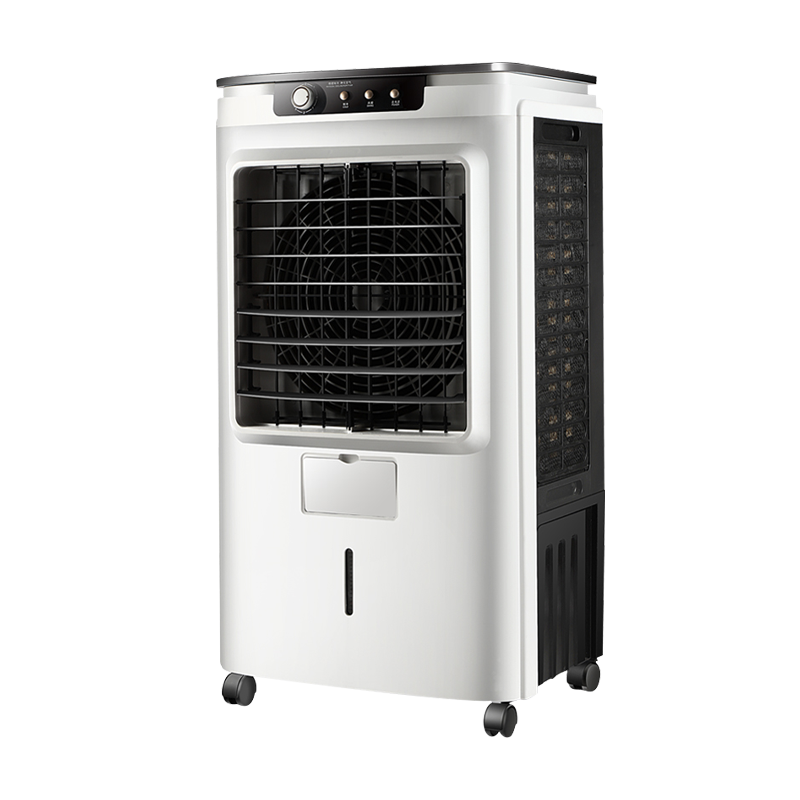In the sweltering summer, when we search for efficient and energy-saving cooling solutions, the names air coolers and Evaporative Air Cooler (commonly known as eco-friendly air conditioners or water-cooled air conditioners) frequently come up. Because they are both related to "water" and "cooling," many consumers mistakenly believe they are the same type of cooling equipment.
However, this is not the case. These two products differ fundamentally in their cooling principles, energy efficiency, and applicable scenarios. This article will provide an in-depth analysis to help you accurately distinguish between them and choose the most suitable cooling equipment for your home or industrial environment.
Content
- 1 I. Core Cooling Principles: Differences in Physical Phenomena and Equipment Performance
- 2 II. Comparison of Performance, Energy Consumption, and Applicable Scenarios
- 3 III. Why are Evaporative Air Cooler More Popular in Industry and Commerce?
- 4 Conclusion: Correct Identification, Wise Choice of Your Cooling Equipment
I. Core Cooling Principles: Differences in Physical Phenomena and Equipment Performance
To differentiate between air coolers and Evaporative Air Cooler, the key is to understand their cooling principles.
1. Air Cooler (Air Cooler/Fan)
Principle Overview: The core function of an air cooler is still a "fan." It uses a water pump to wet an ice curtain (or ice crystals), and the fan blows out the moistened, cool air.
Cooling Effect: The cooling effect mainly depends on the temperature of the ice crystals or ice water in the tank, making it a short-term and localized cooling device. It primarily increases airflow and slightly raises humidity, providing a cooling sensation, but its cooling capacity for large spaces is limited.
Suitable Scenarios: Suitable for short-term personal use in bedrooms, small offices, and other transitional products prioritizing cost-effectiveness.
2. Evaporative Cooler (Eco-friendly Air Conditioner)
Principle Overview: Evaporative Air Cooler, also known as water-cooled air conditioners or eco-friendly air conditioners, utilize the natural physical phenomenon of "water evaporation absorbing heat." It forces air through a specially designed wet curtain medium; during evaporation, the water absorbs sensible heat from the air, thus lowering the air temperature.
Cooling Effect: The cooling range is typically between 5°C and 12°C (depending on ambient humidity), providing continuous and effective substantial cooling while constantly introducing fresh air.
Core Advantages:
- Ultra-low Energy Consumption: Compared to traditional compressor air conditioners, Evaporative Air Cooler typically save over 70% on energy consumption.
- Environmentally Friendly and Healthy: It does not use Freon during operation, making it completely green and environmentally friendly.
- Ventilation: It has a forced ventilation function, continuously exchanging indoor air.
II. Comparison of Performance, Energy Consumption, and Applicable Scenarios
1. Cooling Principle
Air Conditioning Fan: The main principle is water circulation to moisten an ice curtain, which is then blown out by a fan. The cooling effect largely depends on the temperature of the water/ice in the tank.
Evaporative Cooler (Eco-friendly Air Conditioner): Utilizes the natural physical phenomenon of water evaporation absorbing heat. Air is forced through the wet curtain medium, and the water absorbs heat from the air during evaporation, achieving substantial cooling.
2. Cooling Magnitude
Air Conditioning Fan: The cooling magnitude is relatively small, usually localized and limited, similar to the effect of a hand fan.
Evaporative Cooler: Achieves a significant cooling effect, generally between 5°C and 12°C (depending on ambient humidity).
3. Energy Consumption
Air Cooler Fan: Low energy consumption, similar to a regular fan.
Evaporative Cooler: Features ultra-low energy consumption, far lower than traditional compressor air conditioners, making it the preferred energy-saving option.
4. Applicable Space
Air Cooler Fan: Primarily suitable for localized cooling in small spaces or personal areas.
Evaporative Cooler: Suitable for large spaces and open-plan areas, especially widely used in industrial cooling.
5. Air Quality
Air Cooler Fan: Operates primarily through internal air circulation.
Evaporative Cooler: Offers continuous fresh air intake and forced ventilation, helping to improve indoor air quality.
III. Why are Evaporative Air Cooler More Popular in Industry and Commerce?
In industrial and commercial cooling sectors, Evaporative Air Cooler (water-cooled air conditioners) are rapidly replacing traditional high-energy-consuming refrigeration equipment, becoming the new standard configuration.
Superior Energy Efficiency: For large areas such as factories, warehouses, and farms, the energy consumption of traditional air conditioners is a huge burden. Evaporative Air Cooler, however, only consume electricity for fans and water pumps, resulting in extremely low operating costs and making them an ideal solution for energy conservation and emission reduction.
Cooling in Open Environments: Many factory environments require doors and windows to remain open, making traditional air conditioners ineffective. Evaporative Air Cooler adapt well to these open environments, continuously providing cool, fresh air.
Improved Air Quality: While cooling, environmentally friendly air conditioners effectively remove indoor odors, dust, and polluted air through continuous ventilation, significantly improving the comfort of the working environment.
Conclusion: Correct Identification, Wise Choice of Your Cooling Equipment
In short, an air cooler is more like a humidifying fan, while an evaporative cooler is a highly efficient, environmentally friendly, and low-energy-consumption cooling device.
When you need an industrial cooling solution for large or semi-open spaces, or want to achieve energy conservation and emission reduction while cooling, choosing a professional evaporative cooler (water-cooled air conditioner) will be a wiser decision. Understanding their cooling principles and performance differences is essential to choosing the right cooling equipment for your needs.
 English
English 中文简体
中文简体 عربى
عربى Tiếng Việt
Tiếng Việt



 CONTACT US
CONTACT US